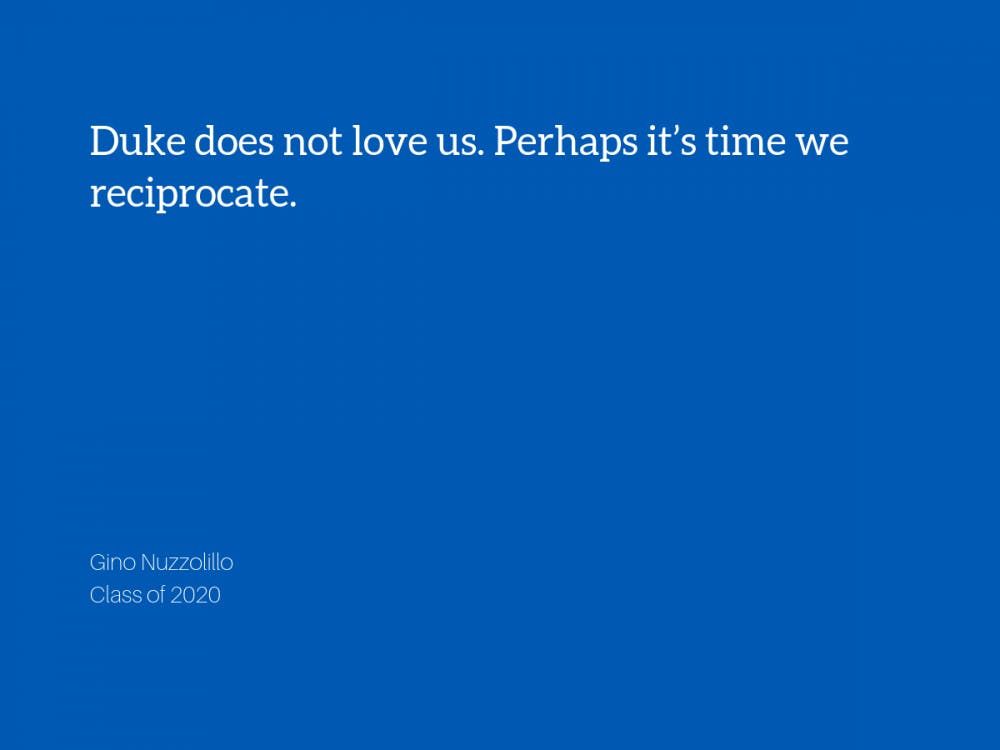About a year ago, Duke administration almost succeeded in eliminating health insurance for most students on financial aid. The policy change was intentional; its subtle implementation followed by the administration’s sheepish reversal in the face of public pressure reflected a university more concerned with saving a few bucks than its students’ access to basic healthcare. Although students and their families won, President Price’s explanation of the decision carried an implicit threat: “We do not have unlimited financial resources...the broader challenge to university finances has not gone away.”
Price left the fate of financial aid for future students unclear and the concerns raised by students regarding summer financial support, work-study, and continued health insurance coverage still go unaddressed. We’ve heard these tepid and vague reactions from university decision-makers many times before, in the non-response responses to issues like racist speech scrawled in Black cultural spaces or the concerns of protestors like the LGBTQIA+ students in the Divinity School.
Such agony and controversy over financial aid budgets seems laughable in the wake of the grand opening of the Karsh Alumni and Visitors Center. The university is seemingly willing to direct donors to drop $32 million on a complex few asked for, a space dedicated primarily to generating more donations and copying Stanford.
Duke may posture and self-congratulate about the care and concern it applies to student and community well-being, but the feeling of seeing such unnecessary, superficial opulence reminds us where Duke’s priorities lie—financial aid is a “challenge,” but millions are available for a “dynamic” branch campus in China, a “best in class” Alumni center, for luxurious dorms somehow stuffed over-capacity. The rules governing university finances are, of course, complicated—but if recent columns are any measure of student needs, Duke’s spending decisions raise questions asking to what extent those priorities consider the most vulnerable among us.
In fact, we can interrogate Duke’s Strategic Framework to see if a gap exists between stated values and daily practice. If we believe that Duke’s “brightest and boldest thinkers” are our “true value proposition,” why is there still no hate & bias policy or living wage guarantee for all employees, which would signal a commitment to ensuring our community’s safety and economic security? If we believe that Duke can “transform teaching and discovery,” why did Duke hire union-busting, top-dollar law firms like Proskauer Rose to maintain the exploitation of graduate students and contingent faculty labor, whose victories came only after their persistent protest? If Duke prides itself in its graduate contributions to teaching, why did Duke only concede to the bare minimum of a 12 month stipend, while grads still have to run their own food pantry? If Duke wants to build a “renewed campus community” focused on our well-being, why does Greek Life still exist—and where is the material investment for overwhelmed Wellness Center services? If Duke hopes to forge “purposeful partnerships in the region,” why obstruct discussion on the light rail, the gas plant, or Parking and Transportation abuse of workers, all affecting residents of this region? If Duke values knowledge in the service of society, why encourage students to work for Palantir’s deportation-abetting machinery, threatening undocumented people across North Carolina? These practices, behaviors, and incidents are less about individual administrators, but rather reflect systemic injustice. Our lived experiences as students, faculty, staff, workers, and community members are lost in these gaps.
In light of these (recent) histories, we must ask: who has Duke been changing for? The student body is still largely drawn from America’s wealthiest families, where 69 pecent of students come from the top 20 percent of incomes and only 3.9 percent come from the bottom 20 percent. Duke reproduces wealth and income inequality by refusing to end legacy admissions (one wonders if our percentage of legacy admits is similar to Harvard’s) and scaffolding a pipeline to the numerous corporations populating the Career Fair, a symbol of the futures Duke hopes we pursue—companies like Capital One, ExxonMobil, and Walmart.
The intended byproduct of this process, of course, is a future class of new donors hoping to slap their names on another building or bench, as evidenced by an email to seniors this week which has already introduced us to the great honor of donating to Duke before we even receive our degree.
Indeed, Duke is a blind adherent to the gospel of wealth accumulation and “do-good” philanthropy—this past week, the Board of Trustees honored philanthropist and former Board chairman David Rubenstein, whose occasional donations, as argued by former student Sydney Roberts, obscure violent origins in his private equity firm’s displacement of poor people and execution of mass lay-offs. A cursory look at the Board of Trustees website reveals its members as part and parcel of the United States’ gilded elite, executives at firms like McKinsey (who contract with ICE and exploit Puerto Rico’s debt crisis), Apple (manufacturer of microchips in military missiles), and ARAMARK (a notorious provider of inadequate, maggot-infested food in prison and jails, turning a profit on caged humans).
In sum, Duke remains committed to the interests of the wealthy and well-connected who in turn reshape the university into its modern corporate form. And for the rest of us? As argued by my fellow columnist Annie Yang, we are reduced to customers, if not commodities ourselves.
Duke does not love us. It’s about time we realized it.
Gino Nuzzolillo is a Trinity senior. His column runs on alternate Thursdays.
Get The Chronicle straight to your inbox
Signup for our weekly newsletter. Cancel at any time.

